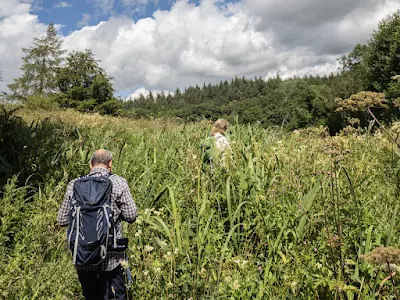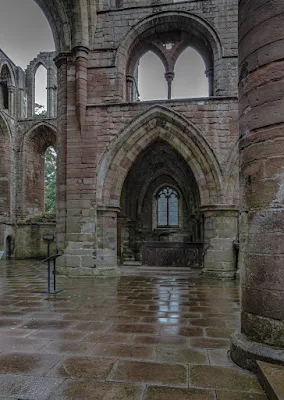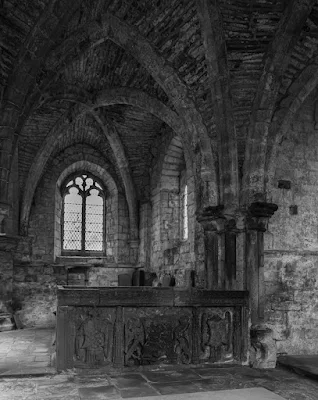We took Vivienne Crow's guide, Walking in Cumbria's Eden Valley and chose to walk Rutter Force and Huff Beck that was a 7 mile walk. Rutter Force is an impressive place to visit. The idyllic water fall flows down the back wall of the cliff alongside a watermill. Beyond the falls, a lovely beck-side path that heads back towards Appleby passing through Hoff along the way. It was pretty overgrown when we left the waterfall before the path lead us along the river. There is a wonderful view of the Pennines with the distinctive rock rimmed valley of the Cup Gill seen in the first image. Appleby has a Norman church that can be seen amongst the trees.
Sunday, 31 July 2022
Lanercost Abbey
Lanercost Priory was founded by Robert de Vaux between 1165 and 1174, the most likely date being 1169, to house Augustinian canons. The priory is situated at the village of Lanercost, Cumbria, England, within sight of Naworth Castle, with which it had close connections.
Naworth Castle, also known or recorded in historical documents as "Naward", is a castle in Cumbria, England, near the town of Brampton. It is adjacent to the A69, about 2 miles (3.2 km) east of Brampton. It is on the opposite side of the River Irthing to, and just within sight of, Lanercost Priory. It was the seat of the Barons Dacre and is now that of their cognatic descendants, the Earls of Carlisle. It is a Grade I listed building.
Lanercost Priory was dissolved in 1538 by Henry VIII, and the conventual buildings were stripped of their roofs, excepting the church building which continued in use as the parish church. In the late 17th century, as the nave deteriorated, the congregation used just the north aisle which had been re-roofed.
In 1747, the nave was re-roofed, but by 1847 the Priory was in a state of disrepair to the extent that the east end roof collapsed. However, by 1849, The church was in use again after a major restoration by Anthony Salvin. In the 1870s, there was further restoration by the Carlisle architect C. J. Ferguson.
At the Dissolution, ownership had passed to the Dacre family, and then in the early 18th century to the Howards. In 1929, the Priory ruins were put into public ownership, and today they are managed by English Heritage.






















